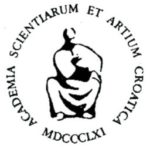Behaviour of New Herbicides in Cornfield near Zagreb, Croatia
Project head: Sanja Stipičević
Foundation of the Croatian Academy of Sciences and Arts
Head: Sanja Stipičević
Duration: 2015-2016
SUMMARY
Triketone herbicides mesotrione and tembotrione and benzoylpyrazole herbicide topramezone represent the newest class of herbicides introduced to the market since 2000. Within a short time span, they have developed into the most popular herbicides used for weed control in corn. They are often also called allelopathic herbicides, because these compounds are synthesized on the model of leptospermone, chemical compound produced by some members of the myrtle family (Myrtaceae). Their unique chemistry offers excellent selectivity for corn, consistent and highly effective weed control, low active ingredient use rates (ten times lower compared to rates of frequently used triazine or chloroacetanilide herbicides), as well as low mobility due to relatively fast degradation in soil. Additionally, these herbicides are used for post-emergence application, which provides economical, biological and ecotoxicological adventages as opposed to pre-emergence herbicides. However, good water solubility (150-100 000 mg L-1) enhances their leaching potential through soil profile shortly after application. These herbicides are primarily used in corn, the most cultivated crop with a very strong weediness, suggesting a significant share of the total annual consumption of herbicides. At the same time, crop rotation after their application needs to be limited for two years. For convenient application and low environmental exposure it is necessary to know the mode the behavior of a new class of herbicides in their most commonly used type of soil and climate.

